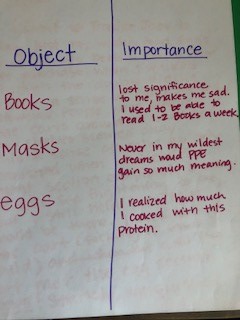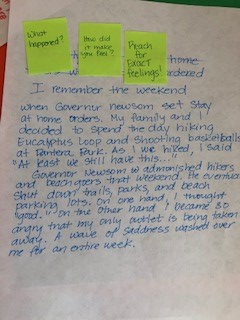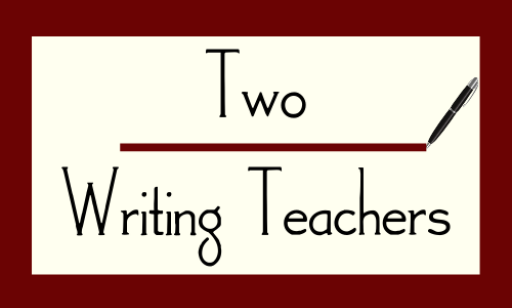Schools in California closed on March 13th. Initially, our district was to be closed until April 20th, but then it was pushed to May 15, and eventually the remainder of the school year. I spent the first five weeks of the closures supporting parents, students, and teachers with technology to stay connected. After April 20th, our district moved into Phase 2, where distance learning officially began. Teachers and I scrambled to find a meaningful writing workshop approach. At first, we dabbled with an asynchronous method for teaching an information writing unit. We met in small groups, and then one on one. At these meetings, I noticed writing volume was low, and I had come to the hard realization that students were not motivated. Eventually, students stopped coming to small groups, and I often joked that my Zoom meetings were a “Party of one.” I needed a vision and support so that I could offer teachers, and ultimately, students, a meaningful experience.

At the end of April, I attended Teachers College Reading and Writing Project’s two-day institute on Living-and-Writing Through a Pandemic. Emily Strang-Campbell led a session on journal writing and its relevance during the time of living through a crisis. Journal writing serves three purposes: to document history, to understand our stories, and to help us stay connected. Journal writing lets us be a historian right now. Some of us may feel we have nothing to say, where in fact, our words document this moment in time. On May 10th, in her guest blog on the Two Writing Teachers, author Laurel Snyder wrote, “This is a moment that calls for writing as a record. Because this-what is happening right now, today-is historic.” You can read the blog in its entirety here.
Another purpose journal writing serves is to understand our own stories. In How Writing Can Help us Heal, author Louise DeSalvo explained that writing about distressing events and how we feel about them is the only kind of writing that clinically has been associated with improved health. Finally, journal writing helps to build connections. Our words can inspire others and help bring joy to people’s lives.
Emily then shared several microsessions on how to generate ideas for journal writing. Here are three transferable ones I used with teachers and kids.
Strategy 1: You can look at objects around you and see which ones have gained significance, lost significance, or that you simply miss. Then make a t-chart listing those items on one side and writing a little bit about its significance on the other. Finally, you can pick one idea and enter as your a journal entry.




Strategy 2: You can create a double timeline. On one timeline you record all the events that you have heard about during the pandemic. Below it, you record your emotional response to each event. Then you pick one event and its emotional response and use as your journal entry.


Strategy 3: You can think about topics or people that you are looking at differently. Then create a t-chart where you record the contrast of your thinking. Record on one side what you used to think about a topic and on the other side write down what your now realize. Finally, pick one and enter in as a journal entry.



The journal writing strategies I shared have really helped breathe life back into me. Our kids need to know that they have agency right now, and journal writing help serve to build that purpose.


Thank you for sharing these great ideas and providing valuable examples! I think this would encourage in-depth writing. I’m saving these techniques in hopes of using them soon.
LikeLiked by 2 people
I really appreciated reading that last journal entry about home and company visiting.
LikeLiked by 2 people